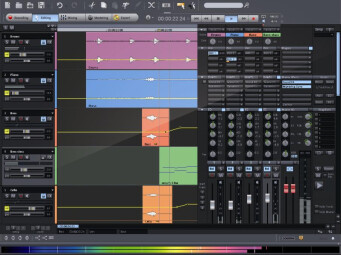Given the good response our "Mastering at Home" series received, yours truly has put himself to the task of doing a similar guide dedicated to recording and mixing.

Being an unconditional fan of Christopher Nolan’s film Memento, it seemed natural to guide you through this mixing journey backwards. So get comfortable because it’s a long trip, one that I hope will be pleasant and exciting for us all.
What’s mixing?
Let’s assume that you have just finished recording your first masterpiece. All takes are ready: Guitar, drums, bass, vocals, etc. What happens next? Well, it’s time to start mixing, you’d say. But what exactly is mixing? It’s obvious, you’ll all reply in chorus: The idea is to put together all individual recordings of the different instruments in a coherent way, to get a nice stereo file that you can distribute to the public, and make the whole world bob their heads to the rhythm of your musical genius! While not entirely wrong, and despite its obvious presumptuousness, this response is very simplistic ─ to say the least ─ as the following analogy will reveal…
Where is Brian?
Let’s go outside the studio for a minute and go into the kitchen… To prepare a dish, the cook must have ingredients, utensils (knife, whisk, stove, etc.) and the recipe at his or her disposal. Is it enough to mix the ingredients to make the dish? No, you must follow the recipe. Can you use any ingredients you get your hands on to prepare any dish? Obviously not, it’s completely impossible to make an omelette without eggs, for instance. Similarly, you can’t make a cheesecake following the recipe to your mom’s meatloaf. And what about the utensils, do they really matter? Well, while you can certainly give it a try, making a pizza without an oven might turn out to be somewhat complicated. On the other hand, there is obviously no single recipe for everything.
What’s more, the same dish won’t taste the same if you cook it or your grandma does, even if you use the same ingredients and follow the recipe she gave you word for word. And imagine the gastronomical orgasm that would ensue if prepared by a top-tier chef!
The bottom line is that despite having the “technical knowledge, ” the right recipe and utensils, plus the necessary ingredients, the result is never guaranteed. Thus, cooking is not an exact science, but rather a very complex art from. You need to develop your skills and master the basics before being able to free yourself and add that personal touch that will make all the difference.
The same goes for mixing. In other words, it’s not enough to mix your tracks just like that. While there are many “recipes” ─ as many (or more) as there are music styles, multiplied by the number of sound engineers worthy of the name ─ there is no one-size-fits-all recipe. The quality of the tools (DAW, EQ, reverb, etc.) at your disposal and your mastery of them are important factors that play in ─ true, but you shouldn’t forget that these technical aspects are never as important as your ultimate goal: Music! Consequently, I always say that ─ beyond the mere blending together of tracks to get a coherent whole ─ mixing is respecting the music you work with, in order to enhance the emotions it conveys.
Hence, it is obvious that this series of articles will not be a mere compendium of useless and sterile recipes, nor will I deal only with technical aspects. While I do not intend to open your eyes ─ nor ears ─ I do hope that some of the ideas we will develop together (thanks to the forums!) in the coming weeks will make their way into your mind and help you approach things in your own unique way.
I’ll see you in the next episode!

